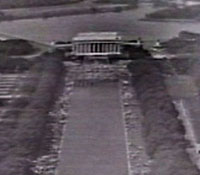The March on Washington was the first organized Negro operation that was accorded respect and coverage commensurate with its importance. The millions who viewed it on television were seeing an event historic not only because of the subject but because it was being brought into their homes. Millions of white Americans, for the first time, had a clear, long look at Negroes engaged in a serious occupation. The stereotype of the Negro suffered a heavy blow.
-Dr. Martin Luther King, Jr.
As television emerged as a dominant visual medium in the 1950s and 1960s, it was increasingly vital in documenting the civil rights struggle. Intentionally or otherwise, it served the immediate needs of the movement: as a window through which millions could witness the black struggle; a means for bringing African Americans into private homes where they would never have been invited; a way of educating and inspiring black activists around the country; and a catalyst for persuading a skeptical nation to face problems it had heretofore ignored.
By the early 1960s, as the civil rights movement was reaching its apex, TV news could deliver breaking stories faster and to a larger simultaneous audience than any other medium. With the advent of new technologies—such as 16mm handheld cameras and satellite broadcasting—television could cover the story of civil rights more frequently and immediately and in greater depth than print media, as demonstrated by the national networks’ daylong coverage of the historic 1963 March on Washington.
Image Credits/Captions (Click on thumbnails for full image)
TV Still: Coverage of the “March on Washington,” August 28, 1963. CBS News. Courtesy of CBS News Archives
